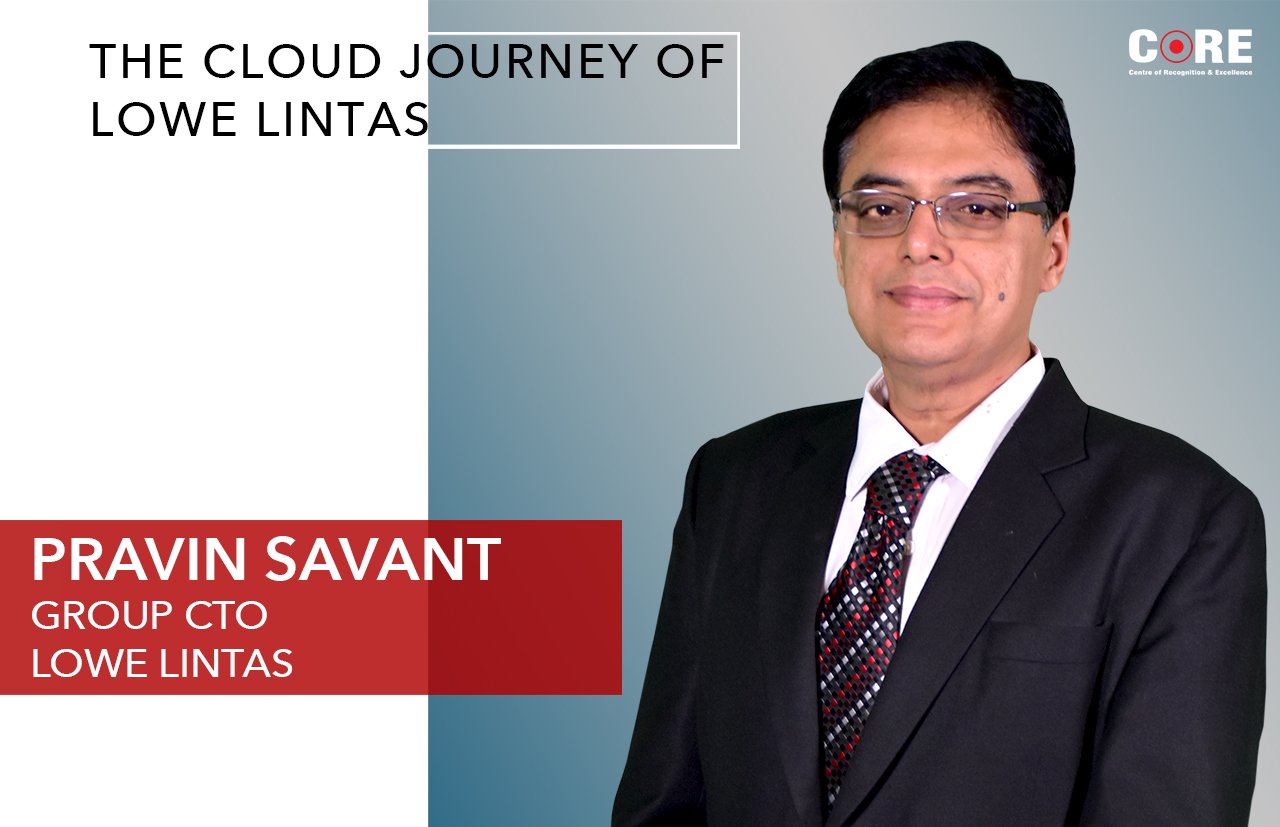Lowe Lintas group is a multinational advertising firm which was experiencing a challenge in managing large volumes of data in multiple formats as most of it was stored and managed on physical storage devices. The company decided to transition to a cloud environment for greater manageability and scalability. Pravin Sawant, Group CTO, Lowe Lintas shared the company’s experience on transitioning to cloud in an exclusive interview with CIO dialogues.
Why did you feel the need to transition to a cloud environment?
We are from the advertising industry and we deal with a lot of heavy duty files. They will be in a lot of disparate media formats. Average sizes of the files will be 20-40 MB. There are even larger files. The biggest challenge is that we have to manage these files on a day-to-day basis. Handling a large volume of data over a period of time was getting out of control. We used to depend on people taking backup on hard drives. A critical concern was data availability and we also had to ensure that the data was not lost in the process. So data availability and data security were the key reasons why we moved to cloud.
So how long ago did you start the journey towards the cloud?
We started the journey three and half years back. There were multiple solutions that we looked at. We were interested in data classification. Itʼs implementation at the file/folder level. We also needed features that allowed us to use connectors to other services. We also wanted to know if we could use from the desktop to transfer and access the data seamlessly. All these parameters were given due weightage before we zeroed in on the cloud option.
It took us about six months to select a vendor when w finally embarked on the cloud journey we decided to call it Project Egnyte.
What cloud models did you consider prior to transition and why did you settle on a public cloud model?
We went for public cloud with hybrid capabilities. We are now working on the hybrid model where there is a local data gateway. This will be dependent on various factors. In cloud adoption there are stages. You can very well start with public cloud. When the data assumes a particular threshold then we can look at whether they can take down part of the data to a different medium and also have a significant performance impact. For example we have 600 users in a single office where there can be a bridge version on the gateway wherein we access it immediately.
What were the challenges you faced prior to implementation?
User behaviour was the key for us in terms of getting the users to now look at the cloud as the storage and distribution setup rather than the old computers. The reason for storing the files in USB or pen-drive or local hard drive is that itʼs ready and easy to access the files or even to share them. The simplicity of the cloud environment to get all of these daily activities that the user does had to be effectively communicated and we had to educate the users on the prohibitive cost involved having so many devices with them and hard drive failures cost the company thousands of rupees to retrieve data.
What were your concerns while adopting the cloud platform?
First and foremost, cloud adoption had to be safe. We had to migrate all the users on to the cloud. Today we are successful in getting HR, finance and other departments to use the cloud. Consequently we have a reference point for the users. We have to do this in phases considering we have multiple offices.
What challenges did you face post implementation?
There were quite a number of them. After testing the platform when the users have started using it there are always issues. Till the platform stabilises there are technical glitches to be resolved. The fact that the challenges were addressed in time was crucial in getting the adoption and acclimatization.
The challenges we are facing now is the volume of data that is getting generated. We are now having 40 terabytes of data on cloud. So how do we manage it ? Out of 40 TB how much data is relevant in the day to day business? We started with 10 terabytes. Today managing the volume of data is becoming a challenge.
What sort of a business impact has the transition to cloud had?
I would not overplay the quantitative side of it. Qualitatively, there is a huge impact. The knowledge sharing is not lost. We have created brand specific folders in cloud. We don’t have to start anything from scratch.
There are lots of business processes which have become efficient. Earlier, it would take an exchange of emails multiple times. Now on the folder all the access, credibility and revisions are in a systematic way. It qualifies the process to be secured. It takes care of data classification, compliance needs etc. For us, itʼs not a luxury, but a necessity.


